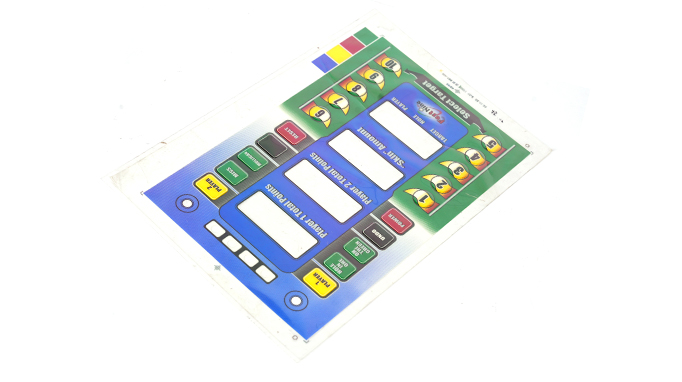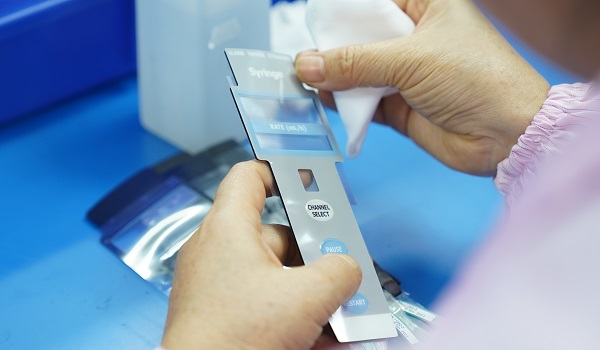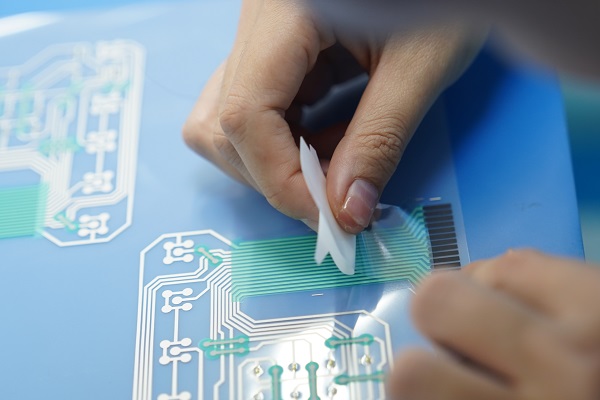
How to Design a Membrane Switch According to Your Needs
How to Design a Membrane Switch According to Your Needs
As an integrated control system that integrates key functions, indicating components, and instrument panels, membrane switches are beautiful, lightweight, and have excellent conductive properties. Membrane switches have the characteristics of waterproof, dustproof, and anti-static interference during use. It is widely used in electronic communications, medical equipment, industrial control, instrumentation, automotive industry and smart home. The following is a brief introduction to the membrane switch production process.

Membrane switch design
The membrane switch has a clear structure, mainly including five structural layers: panel layer, surface adhesive layer, upper circuit, interlayer (isolation layer), lower circuit and back adhesive. The thickness of each structural layer can be designed according to the customer’s specific needs, and the thickness of the membrane switch panel can also be increased by adding interlayers.

- The panel layer generally uses high-toughness PET or PC light-transmitting colorless sheets. Different patterns can be printed on the panel layer through digital printing technology. Its main function is to function as logos and buttons;
- The surface glue uses 3M glue to tightly adhere the panel to the upper circuit. 3M glue has super strong adhesion effect;
- Both the upper circuit and the lower circuit are made of polyester film (PET) with excellent toughness, screen-printed with conductive silver paste and conductive carbon paste, and dried and aged to make it conductive. For circuit outlets with a plug-in spacing of less than 1mm, the golden finger connection socket is very convenient. It is easy to puncture the silver paste and cause defects. It is recommended to use FPC with strong wear resistance for the entire circuit;
- The interlayer plays the role of insulation and bonding between the upper circuit and the lower circuit;
- For the bottom layer of adhesive, first consider what kind of material it is attached to, and choose a 3M adhesive that can adhere closely to the adhesive surface.

All material selections for membrane switches must take into account the overall sealing, waterproofness, insulation and aging resistance. For membrane switches used outdoors, additional considerations need to be taken into consideration such as wind and rain, seasonal temperature changes, and strong ultraviolet radiation in the sun. envirnmental factor. When designing membrane switches as a whole, engineering designers must take both science and technology into consideration to ensure that the products produced are both stable, reliable, economical and practical.
What is silicone rubber material? Silicone rubber membrane switch
Silicone rubber material is a polymer elastomer with silicon-oxygen bonds as the main chain. It is temperature-resistant from -60℃ to 230℃, soft and insulating. The membrane switch made of it can be turned on instantly when pressed, rebounds neatly, is waterproof, dustproof and oil-resistant, making home appliances, automotive and medical panels thin and reliable. What ...
Silicone rubber keypad manufacturer, Silicone rubber keypads suppliers
Silicone rubber keypad is a membrane switch made of silicone rubber material with good flexibility and insulation. It makes the conductive layer under the silicone rubber contact with the circuit by pressing, thus achieving the conduction of the circuit. This switch not only provides comfortable tactile feedback, but also has the characteristics of waterproof, dustproof ...

What is a nontactile membrane switch? Non tactile meaning
Nontactile membrane switch is a membrane switch that provides almost no physical feedback when operated, and the user can hardly feel the tactile change when pressing. This design is common in modern home appliances and industrial equipment, and is suitable for scenarios that require a simple operating interface and a quiet environment. What is a ...
Contact us online